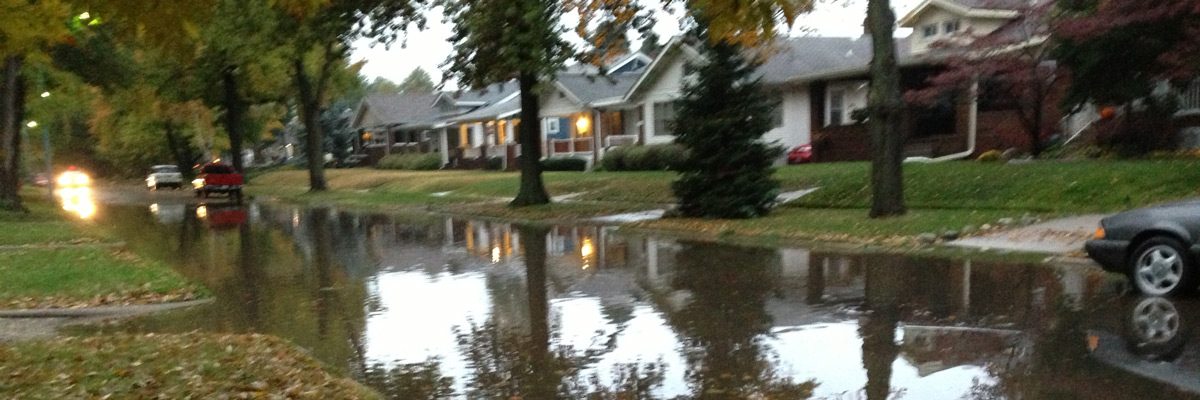Well this is a fine kettle of fish. First I wrote a post for Friday and did not post it…wow that is a major blogging blunder. Second, the topic for the near future sucks. Weatherization should be a topic deader than a door nail. Obsolete. This was a HOT topic in the 1970s, but this is 40 years later. Yet everyone still lives in drafty inefficient houses. Why? Because of the Utility Companies greed. Oh that could be. Because the Government subsidizes energy costs. Oh that could be too…Because Americans are lazy, fain helplessness and love to throw energy around like it was play money. Oh that too. Still, since it is fall and I am a Google slut:
http://www.preservationnation.org/issues/weatherization/

What’s at Stake? More
Not since the days of the oil crisis in the 1970’s have Americans been so focused on energy consumption, especially weatherization. Just as the cost of heating and cooling has risen, so has the awareness of just how much energy seeps out of an average home every day. Central to this discussion is the role of older and historic buildings – and making them more energy efficient without jeopardizing their unique character.
Start with An Audit – The Good Kind More
 Why A Home Energy Audit?
Why A Home Energy Audit?
The first step in upping your home’s energy efficiency is knowing exactly where its problems areas are located. Afraid of the unknown? Don’t be! Knowledge is power, and a thorough, top-to-bottom home energy audit will equip you with everything you need to weatherize your older or historic home the right way. Read More »
![]()
- Conversation with an Energy Auditor: David W. Malone, 1st Choice Energy
- Conversation with an Energy Auditor: Amanda Evans, Advanced Home Analysts
- Conversation with an Energy Auditor: Tom Schlotter, Allied Home Inspections
Windows More
 From Gothic masterpieces to the colorful details of stained glass, original windows help tell the special stories of our older and historic homes. However, despite their character-defining contributions, they are a commonly – and quite often inaccurately – labeled as energy drains that should be thrown out and replaced. Use this section of our guide to learn how you can keep your old windows, achieve energy efficiency, and be “green” in the process. Read More »
From Gothic masterpieces to the colorful details of stained glass, original windows help tell the special stories of our older and historic homes. However, despite their character-defining contributions, they are a commonly – and quite often inaccurately – labeled as energy drains that should be thrown out and replaced. Use this section of our guide to learn how you can keep your old windows, achieve energy efficiency, and be “green” in the process. Read More »
- Why do my old windows matter?
- Should I believe the hype about new windows being better?
- Should I repair or replace my old windows?
- Will storm windows help?
- How do I find someone to repair my windows?
- Are there easy, low-cost ways to make my windows more energy efficient?
:}
Weatherization Tips for a More Energy Efficient Home

- First, test your home for air tightness. On a windy day, hold a lit incense stick next to your windows, doors, electrical boxes, plumbing fixtures, electrical outlets, ceiling fixtures, attic hatches, and other locations where there is a possible air path to the outside. If the smoke stream travels horizontally, you have located an air leak that may need caulking, sealing, or weatherstripping.
- Caulk and weatherstrip doors and windows that leak air.
- Caulk and seal air leaks where plumbing, ducting, or electrical wiring penetrates through exterior walls, floors, ceilings, and soffits over cabinets.
- Install rubber gaskets behind outlet and switch plates on exterior walls.
- Look for dirty spots in your insulation, which often indicate holes where air leaks into and out of your house. You can seal the holes by stapling sheets of plastic over the holes and caulking the edges of the plastic.
- Install storm windows over single-pane windows or replace them with double-pane windows. Storm windows as much as double the R-value of single-pane windows and they can help reduce drafts, water condensation, and frost formation. As a less costly and less permanent alternative, you can use a heavy-duty, clear plastic sheet on a frame or tape clear plastic film to the inside of your window frames during the cold winter months. Remember, the plastic must be sealed tightly to the frame to help reduce infiltration.
- When the fireplace is not in use, keep the flue damper tightly closed. A chimney is designed specifically for smoke to escape, so until you close it, warm air escapes—24 hours a day!
- For new construction, reduce exterior wall leaks by either installing house wrap, taping the joints of exterior sheathing, or comprehensively caulking and sealing the exterior walls
:}
Here is why I have always had so much trouble with this field…When does weatherization become new construction…Installing new windows is pretty major…but windows are where you start because they have an R value of 1. I personally recommend taking all the windows you can live without in the winter “out of service”. Stuff them with insulation and cover them with thick plastic of better yet decorated plywood or R board.
:}

Pingback: Perfect plating
clarification about what. i will answer if i can
Pingback: Open...